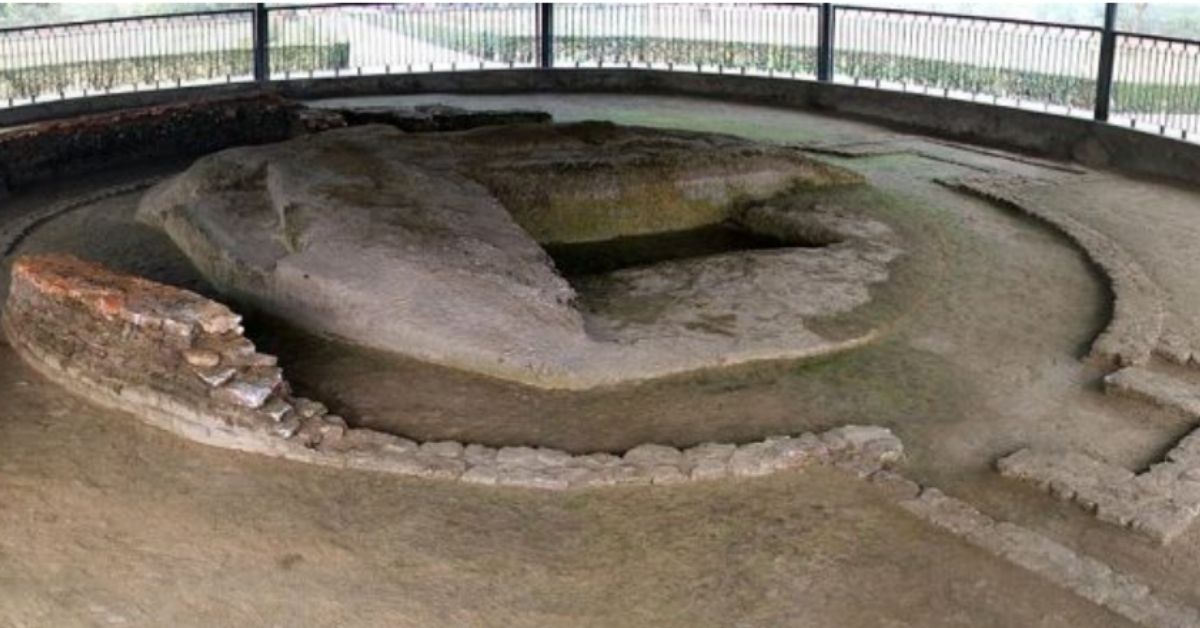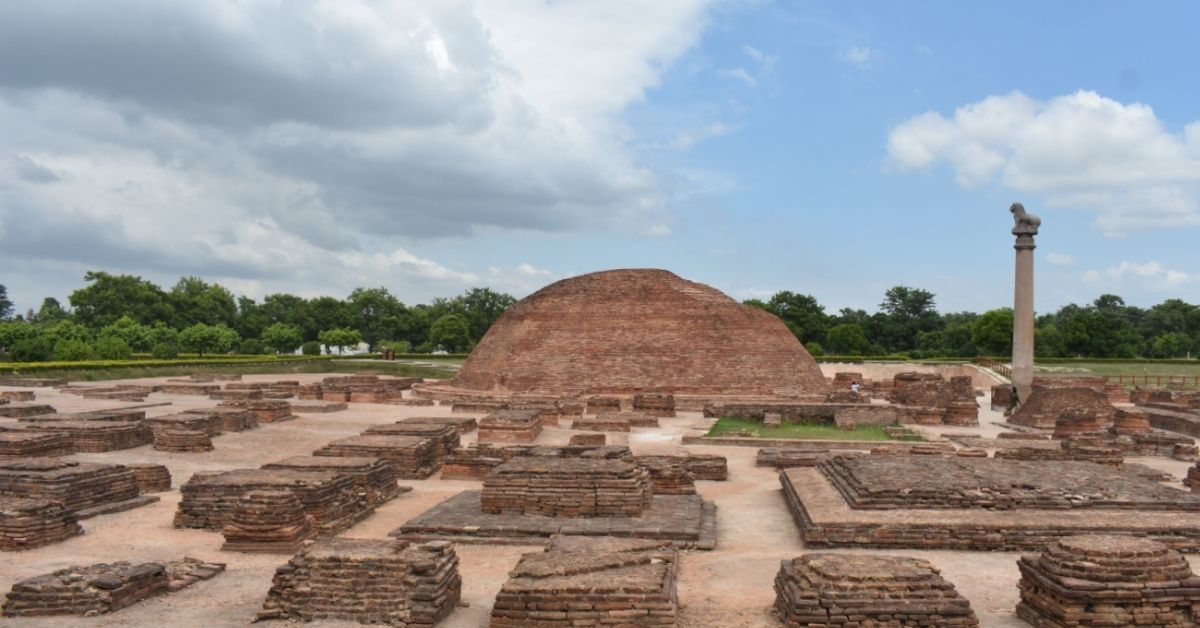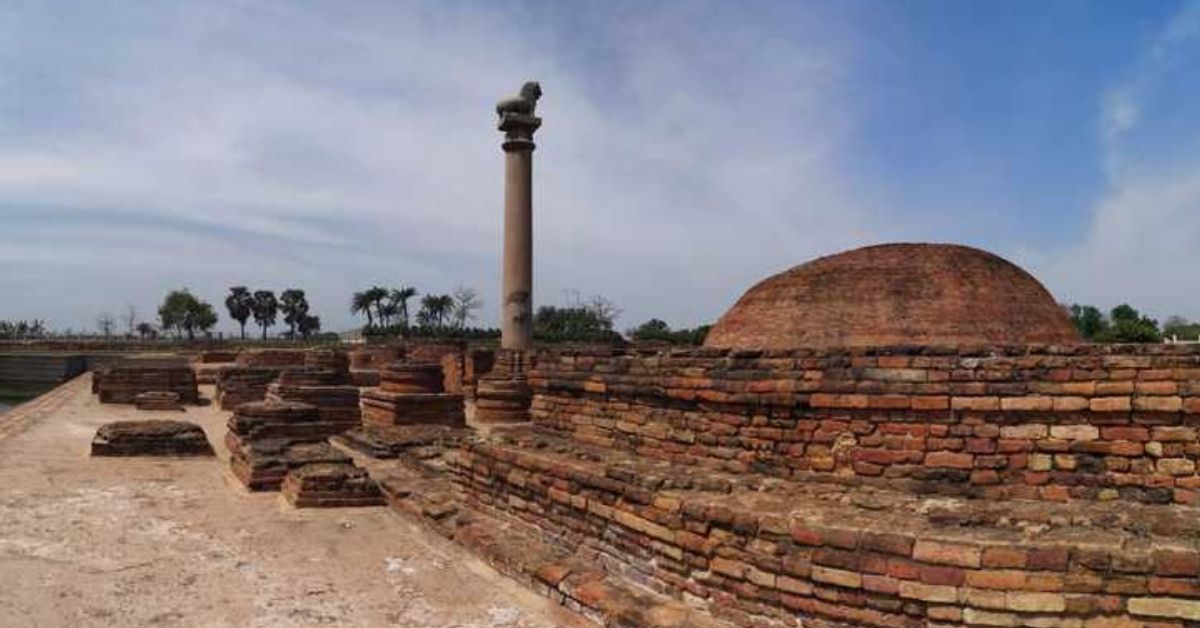Vaishali: World’s First Republic Was In India, And A Turning Point In History
The world’s first republic, Vaishali, is in Bihar, India. Here’s the story of its rise and fall, and why it was an integral city in ancient India.

Today, the Magna Carta, a document that constitutes a fundamental guarantee of rights and privileges, is regarded as one of the most important symbols of liberty. It has a long and winding history, and an 800-year-old legacy.
So was it this document that laid the foundation of democracy as we know today?
American and British societies would like to believe so — leaders have, time and again, invoked the charter to symbolise the struggle for justice and freedom. But much before the Magna Carta came into existence in 1215, the Indian subcontinent was already replete with several independent republics, some as old as 6th century BC.
As author Mohan Guruswamy wrote in 2015, “The main characteristics of these were a raja, elected or hereditary, and a deliberative assembly. These assemblies met regularly and passed laws pertaining to finances, administration and justice….While the assemblies mostly comprised the nobility and landowners, in some cases, they included all free men.”

A turning point in history
Among these was Vaishali, home of the Licchavi clan, and today known as the world’s first republic. It is an archeological site located in present-day Bihar. This, history says, is where Gautam Buddha delivered his last sermon, and was home to the earliest known example of a stupa.
Vaishali was part of the Vajji confederacy and the 16 mahajanapadas (kingdoms) of ancient India. Among the most famous figures to be associated with this land was royal courtesan Amrapali, who later turned an ardent Buddhist nun. The establishment of the mahajanapadas was considered a turning point in history, where a number of large cities arose after the demise of the Indus Valley Civilisation.
In its prime, Vaishali was surrounded by three walls and gates with watch towers, with “many storeyed buildings, pinnacled houses, leisure gardens and lotus ponds”. Brick, stone, mud and wood were the main components of architecture here. After its early excavation, it was discovered that the first barrier of defence for the city was built with baked bricks; the second consisted of a massive rampart made of compact earth; and the third with bigger bricks.
Over time, excavations have indicated that inhabitants of Vaishali lived on the town’s eastern side, where the ground rises gradually. This enabled the population to escape annual floods, and where a majority of ruins were later unearthed. Wells, pottery, implements and platters of stone were excavated in large numbers here.
Vaishali, though still an oligarchy, was different in its neighbouring absolute monarchies. It had no place for hereditary monarchies, but in many senses, was nowhere close to modern democracy.
As Guruswamy noted, “The Brahminical system prevailed in the sense that the monarch always had to be a Kshatriya…The Licchavis, who held sway over the Kathmandu Valley in present-day Nepal and a major part of northern Bihar, were governed by an assembly of about 7,000 rajas who, in turn, were the heads of all the major families.”
These rajas met each year to elect a member from their groups as a ruler, and only a small Licchavi population was qualified to vote — the males belonging to the kshatriya clan. Three chief functionaries worked in tandem — the ruling chief, the deputy chief and the chief of the army. In terms of criminal proceedings, the accused would pass through seven layers of judges, and the final judge, the Raja, would prescribe punishment as detailed in the Pavenipotthaka (the book of precedence).
The huge mound that is today called Raja Vishal ka Garh served as a parliament for the Licchavis all those centuries ago, with a seating capacity of 700. The city is also home to the Abhishek Pushkarini, the coronation tank where the elected Licchavi representatives were anointed.

Vaishali also finds significance in Jainism and Buddhism — Mauryan Emperor Ashoka erected a pillar to commemorate Buddha’s last sermon, and Mahavira, Buddha’s older contemporary, lived in the town till the age of 22.
Is Vaishali the earliest example of a democracy?
Licchavis continued to populate Vaishali during the Gupta period. However, the city’s decline came with the Magadha-Vajji war, where Haryanka dynasty’s king Ajatashatru defeated the oligarchy.
The World History Encyclopedia says that Ajatashatru consulted Buddha himself to figure out a way to take over Vaishali. The latter deemed it a difficult feat — the Vrijjis (people living in the Vajji confederacy) were a strong republic, and the city was fortified with three layers of protection. Accounts of the exact way in which the war was carried out differ.
Buddhist accounts say that the Magadha king sent his chief minister to infiltrate Vaishali from within. This was done under the pretext of having been banished, and the minister was able to create a divide among the Vrijjis. In Jainism, legend suggests that the king prayed to Indra for three days for victory.

Regardless, Vaishali was annexed and stripped off its former glory, and a dwindling socio-economic status resulted in the town becoming obsolete.
Recently, a new archeological study suggested that it was a great deluge, and not a staggering economy, that wiped out Vaishali and many such ancient settlements across Bihar and Uttar Pradesh.
Over time, there has been much debate about how India has been excluded from worldwide discussions of the world’s oldest republics, like those of the Greeks. Prime Minister Narendra Modi has, in the past, invoked Vaishali and the Licchavis to point out that “democracy has always been a way of living and the soul of the nation’s life”.
However, it is pertinent to note that while Vaishali and the Licchavis might have made a shift from cyclic inheritance based solely on a ruler’s bloodline, they still excluded a large chunk of the mahajanapada’s population — women, people of ‘lower classes’, and so on.
Sources:
Scroll.in
World History Encyclopedia
MysterofIndia
JStor
The Wire
Indian Express
Edited by Yoshita Rao
If you found our stories insightful, informative, or even just enjoyable, we invite you to consider making a voluntary payment to support the work we do at The Better India. Your contribution helps us continue producing quality content that educates, inspires, and drives positive change.
Choose one of the payment options below for your contribution-
By paying for the stories you value, you directly contribute to sustaining our efforts focused on making a difference in the world. Together, let’s ensure that impactful stories continue to be told and shared, enriching lives and communities alike.
Thank you for your support. Here are some frequently asked questions you might find helpful to know why you are contributing?


This story made me
-
97
-
121
-
89
-
167











